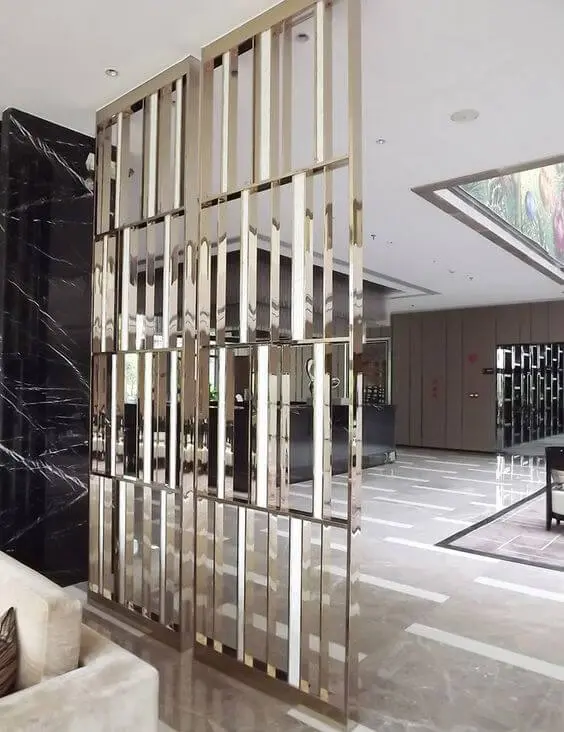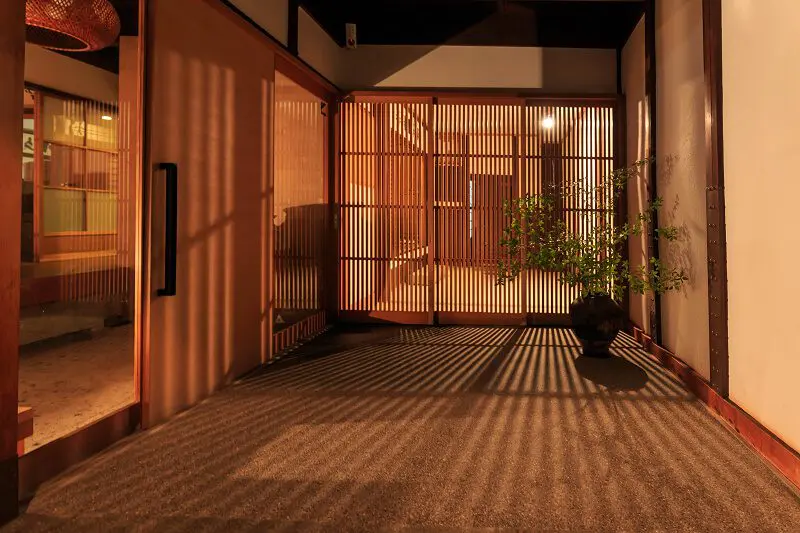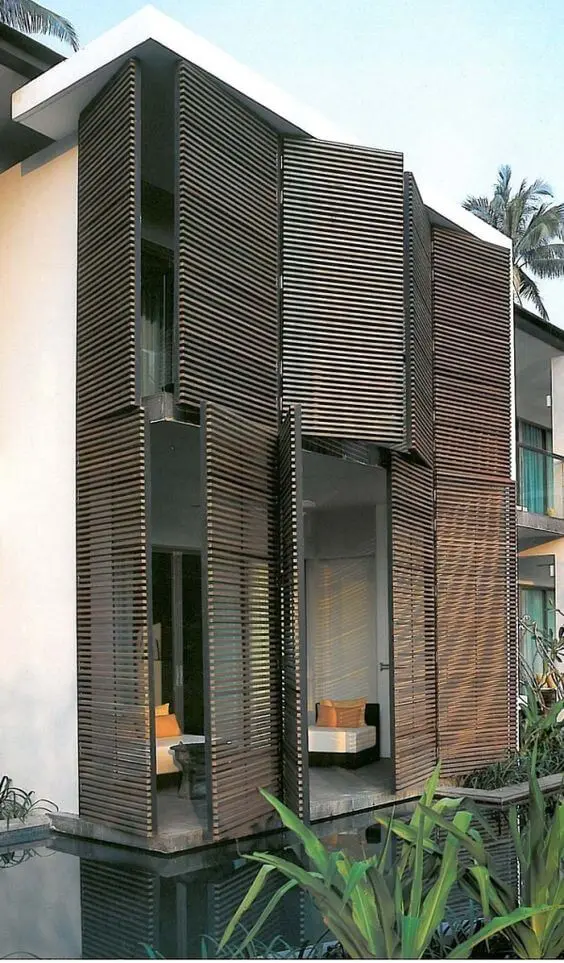Have you ever seen light escaping through a vertical and falling on the surface creating a pattern. A pattern that creates a drama, dances, plays a rhythm, symmetry, parametric, asymmetry of form, of space. Yes that is the ability of a screen (also known as lattice, Mesh, Jali work).
These screens are from centuries, with variety of functions and pattern within. They are used in many places from the south facade or to create a partition that is actually not apart. Continue to read how a revolution is turning into evolution.
1. Part But Apart : Use of Screens as Partitions
Sometimes, we want to divide a room and constructing a wall is not an option that’s where screen enters. Partition that divides the space still connects you visually at the same time making the space look bigger. Fixed Partitions are rigid and immovable whereas you can use screens that are ephemeral.
Moving further, these screens can be used to utmost level by designing it in such a way that provides you with a scope of storage, or a mini library.


2. Sciography : Use of Screens to Play with Lights and Shadows
Too much light? Just add a layer of screen and enjoy the movie. Where, the lights fall in pattern. Over here, you have the freedom to play with voids to create a pattern, a form.
They are not the source of light but the aperture to transform the light into calm and pleasant pattern falling on the surface. Same like how the morning light tries to escape from the tree and create visually appealing patterns on the other side.



3. Elevation : Use of Screens on External Facade
Is Harsh light is disturbing you? Or is your balcony acting as a stage for the passers-by on the street. Screens not only maintain the privacy but also controls the amount of light entering the space. At the same time, it can act as a elevation treatment that will make it look aesthetically appealing.
You just have to carefully choose the material and merge it with the surroundings to create an impact. They are mostly used in the south façade to make the harsh light smooth. The perforation also reduces the weight of the element.


4. Jaali Work : Use of Screens on Window
From centuries, jali work has been around. Covering the windows with jali work is trending since the Mughal period. The reflection through the jali enhances the surface. The enhance meter increases as the surfaces change from land to a water body.
And even by designing the lights that play a beautiful movie of emotions. What matters the most is to where to use the jali. It has the power to give life to a room enclosed with four walls.


5. Stories: Changing Materials and Forms to Create patterns
Screens are ever evolving. Except from their basic function they are now being used in parametric forms and as aesthetical element.
Achieving different forms directly affects the patterns generated by the mesh. This turns the fact from screens within space to space within the screens. Spaces that narrate you story through the screens.
Patterns are based on the design of the mesh and the place of use and the choice of material. Enumerable materials in the market that not only enhances the visual appearance but also adds on to the beauty.


Use them as room dividers, roof and screening or as a aesthetical element. Everywhere it provides you with the possibilities of innovation and new ideas. The above points just screened your minds regarding the screens so go ahead, take any space and just screen it up the way you love it.
– Ovais Bhati





